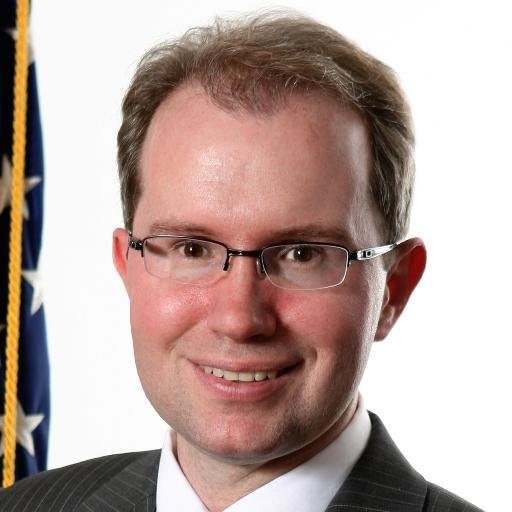
Change-maker and Federal Communication Commission Chief information Officer David Bray will be moving to the National Geospatial-Intelligence Agency, NGA Director Robert Cardillo announced today at the GEOINT Symposium in San Antonio. Bray’s new role, chief ventures officer, is part of the agency’s effort to revolutionize its business practices, workforce and technology acquisition.
“We are standing where the SIGINT community stood when the internet became the digital fabric of the planet,” Cardillo said. “In five years, there may be a million times more than the amount of geospatial data that we have today.”
Even today, the amount of data NGA collects from a single sensor in a combat theater is equivalent to that of three NFL seasons. “Every game,” Cardillo added. “In high definition!”
“If we were to attempt to manually exploit the commercial satellite imagery we expect to have over the next 20 years, we would need 8 million imagery analysts,” Cardillo said.
The future of NGA—and geospatial intelligence writ large—will depend on advanced technologies like automation and artificial intelligence. That’s where Bray, a longtime advocate for both, comes in.
As CIO at FCC, Bray spearheaded the agency’s transition to the cloud, and was able to reduce spending on legacy systems from 85 percent of the IT budget to under 50. With nearly 100 percent of its IT operations now in the cloud, FCC also cut its contractor workforce by around 200 positions.
Bray’s role at NGA will be that of an “internal and external venture capitalist,” he told WashingtonExec in an email, “to help transform the organization to address new opportunities involving open data and commercial geo-imagery, collaborative models of our world, as well as accelerating the introduction of automation and artificial intelligence into the mission processes of NGA.”
Transitions and modernizations bring friction, but Bray is used to being “a human flak jacket,” as he calls it.
“I’ll serve as lead instigator and lead champion of #ChangeAgents at NGA, while at the same time having mechanisms to spotlight new ventures and new avenues of exploration to move the agency forward,” he said.
This role is the first of its kind in a government agency, and has been roughly nine months in the making. The most important part, though, Bray said, is that this push for innovation and transformation isn’t happening in some cordoned side office.
“I firmly believe anyone can be a change agent,” he said. “Transformation is everyone’s responsibility. All of us can break past the status quo.”

